
Good News for Body and Soul
Christian historian Woodrow Walton continues his series on how the good news of what Jesus had done has spread around the world. In Part 4, we read how his followers made the love of God more real in England and the USA as they immersed themselves in charitable work. The Great Commission was being realized as a missionary mandate because it was recognized to be more than just proclamation. The missionary mandate included healing the sick, discipleship, releasing the imprisoned, the afflicted, the haunted, the down-trodden, and penetrating the darkness of the world with the light of a kingdom not of this world but of the one who is King of Kings and Lord of Lords.
The Making of the Christian Global Mission, Part 5: Good News for Body and Soul
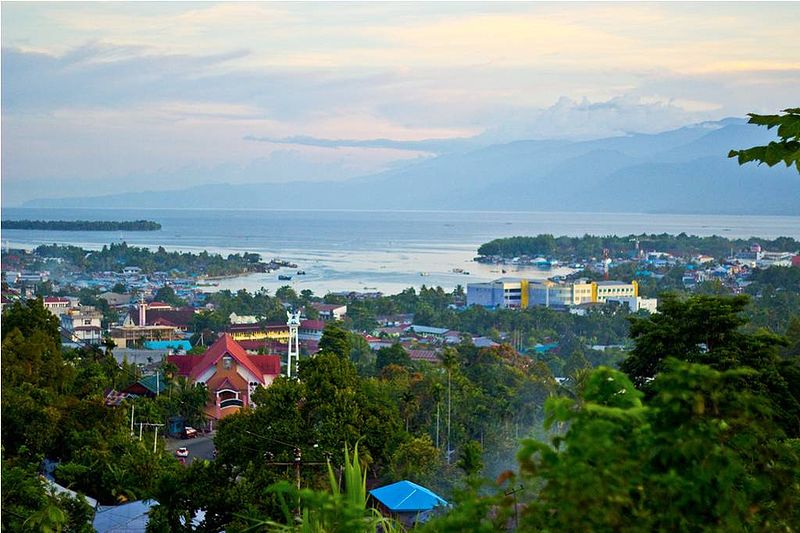
Manokwari, the capital of West Papua, Indonesia (formerly known as Irian Jaya). Image: David Worabay / Wikimedia Commons
Another situation began arising toward the end of the eighteenth century and within the first eight to nine years of the nineteenth was the extension of English missionaries into China, partly due to Sir Francis Drake’s circumnavigation of the globe. Drake’s presence in the western Pacific was critical for England to begin with as the merchant ships of the Netherlands were also present especially in the vicinity of the Spice Islands now known as Indonesia while eastward toward the central Pacific the Spanish Galleons docking and disembarking from Manila in the Philippines. Robert Morrison arrived in China in 1807 from England, three years before Adoniram Judson and his wife arrived in Burma as missionaries representing the American Board of Commissioners for Foreign Missions. The English missionaries concentrated on inland China and besides preaching the gospel established schools and medical facilities. This concentration culminated in the formation of what became known as the China Inland Mission founded by Hudson Taylor and his wife in 1865. A faith mission, the China Inland Mission operated on the basis that one went without financial support and with trust in God for provision. There were also no stipulation as to the gender of the missionary. Of the fifteen missionaries on Taylor’s initial journey into inland China, seven were seven single women. This pattern would remain not only for the China Inland Mission, now known as Operation Mobilization, but was adopted by other mission societies clear into the twentieth century and into the twenty-first.
By the turn of the 19th century into the 20th there were forty women’s mission organizations, and more women were serving in American missions than men. Both Ruth A. Tucker’s From Jerusalem to Irian Jaya (Zondervan, 1983, p. 288) and Andrew Walls’ The Cross-Cultural Process in Christian History (Maryknoll, NY; Orbis Books, 2002, p. 231) attest to this figure.
The end result of England’s entry into organized mission societies having a thought-out mission agenda involving evangelism, education, medicine, and outreach to those in direst need had a direct effect upon the whole Christian spectrum with Presbyterians, Methodists, Anglicans, Catholics, Baptists, and others imitating the China Inland Mission. It began the process that was to eventuate in breaking down the walls among Christians on the mission field and at home.
It also redesigned the character of the Christian world as it fostered and gave birth to the indigenization of the Christian message in which the various congregations birthed in each country took initiatives in leadership, mission outreach, and self-funding. It was in the late nineteenth century, about 1895, when Roland Allen, sent out from England by the Society for the Propagation of the Gospel, advised missionaries to found their work on the idea of the Three Selfs–self-governing, self-funding, and self-propagating.”
One can trace the origin of the “three-self” movement and the spread of each body of Christians indigenous to the country in which the gospel took hold back to the years that the American Board of Commissioners for Foreign Missions sent out Adoniram Judson and his wife and family in the early 1800s and the China Inland Mission and the London Missionary Society later. Between 1807 and ending in 1953 with the departure of Arthur Matthews and Dr. Rupert Clark of the China Inland Mission, thousands of foreign Protestant missionaries and their families lived and worked in China alone not to mention southeast Asia and the sub-continent of India. At the time of the Treaty of Paris in 1763 which ended the French and Indian War which ensured British dominance in Canada and India and the independence of what came to be known as the United States of America, the way was made for the furtherance of the gospel within the British-held lands from Canada, Barbados in the Caribbean, India, Australia, New Zealand, and eastern Africa.
The Mission Covenant Church of Sweden extended itself from Sweden into its settlement which later became known as Delaware and then spread its congregations across the American Midwest and the northern plains states. The Netherlands swapped possessions with England. England gained New York and the Netherlands gained the Spice Islands later re-named Indonesia. During the Dutch period, the Marble Collegiate Church of New York City was built as a congregation of the Dutch Reformed Church. The Christian Reformed Church also from the Netherlands spread across the American northern states, established congregations, schools and Christian publishing houses all across the northern Midwest. Into China went the American Presbyterian Mission, the American Southern Baptist Mission, the English Presbyterian Mission, the Protestant Episcopal Mission, and the English Baptist Missionary Society, to name a few.
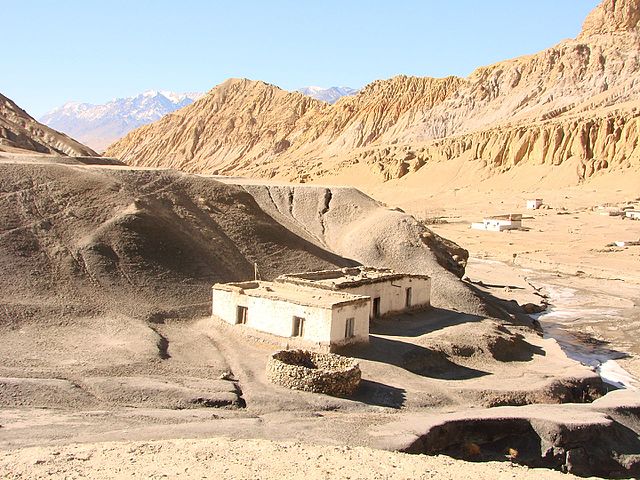
Mustang, Nepal. The name “Mustang” comes from the Tibetan language and means, “Plain of Aspiration.”
Image: Anup Raj Rai / Wikimedia Commons
There were problems to contend with when the missionaries entered areas of central Asia and even China. One of the problems was the presence of Islam in western, central, and southern Asia. Another was the prominence of Hinduism and a multiplicity of differing people groups in India and in the Himalayan mountain chain where lived the inhabitants of Bhutan, Tibet, and Mustang, Nepal, to name a few. Still another was that of unfamiliarity with the remnants of Eastern Christians long isolated from those of the Mediterranean world and of Europe by the westward advance of Arabic, Mongols, and Turkic peoples into the Mediterranean and Eastern European lands. The Church of the East, erroneously called Nestorians by the Greek Orthodox Church, had adherents in northwestern India and held to the Syriac translation of the Bible while the Europeans had the King James Version, the Geneva Bible, or the translation into German by Luther. It took a number of years for acceptance of each other as fellow Christians in a common gospel mission. In time that acceptance came.
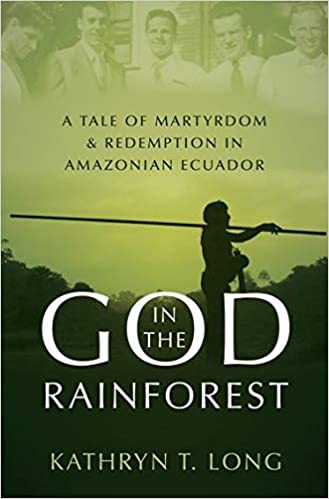 At the same time the sense of a fuller Christian mission emerged beyond that of evangelism as the missionaries from England, America, and Europe included nurses, schools, hospitals. In fact, the evangelical churches as the Methodists, Baptists, Lutherans, and the Cumberland Presbyterians had more women missionaries than men. This became increasingly so with the passage of the nineteenth century that by the early 20th century “Among the personnel of conservative faith missions, women outnumbered men nearly two to one,” wrote Kathryn T. Long in her recent book God in the Rain Forest (New York: Oxford University Press, 2019, p.28). Leading in this trend were the “Brethren” such as the Plymouth Brethren, the Church of the Brethren to name and the Christian and Missionary Alliance.
At the same time the sense of a fuller Christian mission emerged beyond that of evangelism as the missionaries from England, America, and Europe included nurses, schools, hospitals. In fact, the evangelical churches as the Methodists, Baptists, Lutherans, and the Cumberland Presbyterians had more women missionaries than men. This became increasingly so with the passage of the nineteenth century that by the early 20th century “Among the personnel of conservative faith missions, women outnumbered men nearly two to one,” wrote Kathryn T. Long in her recent book God in the Rain Forest (New York: Oxford University Press, 2019, p.28). Leading in this trend were the “Brethren” such as the Plymouth Brethren, the Church of the Brethren to name and the Christian and Missionary Alliance.
The American origin arose with a Presbyterian Minister, Rev. John J. Shepherd and a missionary Philo P. Stewart in the summer of 1832. These two men became friends in Elyria, Ohio. The two were concerned with what they discerned to be the lack of strong Christian principles among the settlers of the American west. The two decided to establish a college where they would “train teachers and Christian leaders for the boundless most desolate fields in the West.” They found support from Albert Finney, a circuit-riding Presbyterian evangelist. They adopted the some of the ideas of an Alsatian pastor John Frederick Oberlin, who introduced educational programs throughout the Alsace and Lorraine areas of France. Oberlin’s programs not only included biblical and Christian studies but courses in the manual trades as blacksmithing, masonry, and road construction. In the spring of 1833, with faith in their project and their labor, combined with funding from several wealthy and sources, and promotion from Rev. Finney, Shepherd and Stewart established the town of Oberlin, Ohio and Oberlin College. It was a high-water moment. In December 1832, 29 men and 15 women began classes of the Oberlin Collegiate Institute. It was the first school in America to welcome into its program African Americans. It was critical for those who would be ministers of the Gospel in the developing American West and important for co-educational higher education in America.
Oberlin was not the only important school of higher education established in the opening of the American mid-west. Seven years after the founding of Oberlin College, Bethany College was founded in the foothills of the Allegheny Mountains, one mile from Pennsylvania and five miles from Ohio in the neck of what is now known as West Virginia, in 1840, by anti-burgher seceder Presbyterian preacher Alexander Campbell, one of the participants in the Second Great Awakening of the 1820s and who in 1832 in Lexington, Kentucky, along with Barton Warren Stone, a New Light Presbyterian, formed the Christian Churches (Disciples of Christ). Each believed in opening the celebration of the Lord’s Last Supper to the new frontiersmen and settlers of the Midwestern lands irrespective of their past church affiliations be they Methodist, Baptist, Quaker, Mennonite, Catholic, or Moravian. In fact, Campbell had high regard for Comenius, the Czech Brethren minister, who had one time was invited by the founders of Harvard University to be its first President [Editor’s note: see Further Reading at the end of this article]. Comenius declined the offer but did encourage the founding of America’s first primary schools for children. Campbell adopted a statement made by Comenius as the hallmark of the Christian Churches (Disciples of Christ): “In faith, Unity; in opinion, Liberty; and in all things, Brotherly Love.”
This regard for open communion among the churches foreshadowed what we now call the Christian ecumenical movement of the late 1890s and the early 1900s. Another step that Campbell took thirteen years later in 1845 was the creation of the United Christian Missionary Society through which congregations could co-operatively support missionaries wherever they went whether Africa, India, South America, Asia, or elsewhere.
At the same time by the 1830s the Midwestern lands were progressively being welcomed into the union as new states, beginning with Ohio Kentucky, and later Indiana. The expansion westward required something more than pastors. The need for traveling evangelists, preachers, and teachers became increasingly important and men like Francis Asbury, Thomas Coke, and Peter Cartwright for the Methodists went as circuit preachers and evangelists. Asbury and Coke became the makers of the Methodist Church in America more so than Wesley who retained his identity as an Anglican evangelist. Walter Scott was the outstanding evangelist for the Christian Churches (Disciples of Christ). Other Christian bodies followed suit in sending out circuit riding pastors who served more than one congregation. The evangelists sought any potential setting outdoors or meeting house. Cartwright once held an evangelistic meeting in a frontier dance-hall.
At the time of the settling of the American Midwest, Great Britain was forging ahead in foreign missions. England, having lost out in gaining ground in what became known as the United States of America concentrated on developing what became known as Canada and its growing influence in East Africa, India, and the Pacific.
The evangelical presence in England occasioned by the preaching of John Wesley occasioned the establishment of a society made up of Church of England laymen and their wives and single women based in Clapham, London, at the beginning of the 1800’s. Historian Stephen Michael Tomkins described the society as “a network of friends and families in England, with William Wilberforce as its centre of gravity, who were powerfully bound together by their shared moral and spiritual values. They were noted for their social activism, by their love for each other, and for taking the gospel throughout the world.” The Clapham Society focused on the abolition of slavery. It initially gathered at the church of John Venn, rector of the evangelical Anglican Church in the Clapham neighbor- hood in south London. Its membership not only included Wilbur Wilberforce, but also Henry Thornton, and John Newton, rector of an evangelical Anglican church in Olney, who gained fame as lyricist of the hymn “Amazing Grace” in memory of his conversion to Christ Jesus and put to music later in 1831 to a traditional American melody by Edwin O. Excell to appear in Carrell and Clayton’s Virginia Harmony.
As intimated in the foregoing, the Clapham Sect had an influence far beyond England and had set a precedent for American, as well as British, evangelical Christianity, as well as India and the rest of the English-speaking world. The Clapham Group also had clout politically, economically, and socially as Wilberforce and Newton and the others brought an end to African slavery throughout the British sphere of influence by 1831, and in a round-about way had an impact on the American abolition movement. The Clapham sect, as it came to be called, also had direct impact upon “foreign” missions as the participants practically underwrote the entire missionary enterprise outside of the British isles. Among the evangelicals were Henry Thornton, the English financier and Zachary Macauley, sometime Governor of Sierra Leone, and Lord Teigmouth formerly Governor-General of India. The term “Clapham Sect” was a later description given to the group by James Stephen in an article of 1844 which uplifted the work of the membership. They were among the founders of the Church Mission Society, the Anti-Slavery Society, the Free Church of England and other Christian-related outreaches.
England also set a precedent worth noting as affecting the later course of action within its overseas “possessions.” England set up a political infrastructure which allowed a stable representative government should they seek independence from the “Mother Country.” This transition differed radically from that of Spanish, Belgic, and French policies, and most likely furthered by the Clapham Sect whose membership was characterized by individuals prominent in both the House of Commons and the House of Lords in the British Parliament.
The consequence of such was a great interest in sending missionaries into India not only as evangelists but also as educators. India, however, was not solely the mission field for the British. About the same time it attracted missionaries from the United States of America at an early date and simultaneous with the westward movement. The apparent earliest American missionary to India was Dr. John Scudder, Sr., and his wife, Elizabeth. Their story is unique in the history of missionary outreach as their children, and grandchildren, and great-grandchildren carried out their parents and grandparents for four or more generations.
Between the 1840s and 1900 there were dramatic changes in missionary outreach through Europe, America, and elsewhere.
Born in Freehold Township, New Jersey, September 3, 1793, Rev. Dr. John Scudder, Sr., was the first medical missionary in Ceylon and India. He graduated from Princeton University, a school of the Reformed Church in America in 1811, and went on to study at the New York College of Physicians and Surgeons and graduated from there in 1813. After experiencing success as a Physician in New York City, he felt God’s call to be a missionary. He and Elizabeth founded the first American medical facility in Asia in Ceylon and later became the first American medical missionary in India. The succeeding four generations of children, grand-children, and great-grandchildren, carried on that mission. Dr. Ida Sophia Scudder, born on December 9, 1870, of the third generation, a great-granddaughter, carried on her great grandfather’s legacy. In 1918, she started one of Asia’s finest teaching hospitals, the Christian Medical College & Hospital in Vellore, India. She served her whole life in India dedicating herself to the health of Indian women in the fight against cholera, leprosy, and the bubonic plague. She was back in the United States of America for a brief period to study at Dwight L. Moody’s Northfield Seminary in Massachusetts but returned to Madras in India to help her father, Rev. Dr. John Scudder, Jr., when her mother was ill at the mission bungalow at Tindivanam, Madras Province in India. Ida Scudder lived to be nearly 90 in 1970. She died at the age of 89 in her home in India. One of her noted students who studied under her and worked with her was the noted Dr. Paul Brand, who did most of his work as a leprosy researcher.
Between the 1840s and 1900 there were dramatic changes in missionary outreach through Europe, America, and elsewhere. Among the changes were growing co-operation among the churches of differing Reformation traditions. Another was the creation of Wheaton College in Illinois in 1860 which became a school for missionaries and evangelists and which at its time of formation, a haven for African-Americans, as a way station of the Underground Railroad. In 1877, the inner-city mission field opened up in Chicago, Illinois, when Colonel George and Sarah Dunn Clarke opened a ministry in a tiny storefront at 386 South Clark Street. The Pacific Garden Mission still operates after 140 years as the oldest inner-urban rescue mission in the United States of America, and today has a nation-wide broadcast.
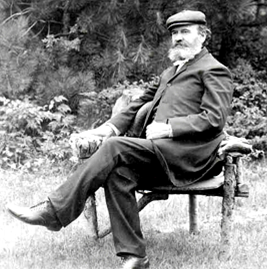
A. B. Simpson (1843-1919)
In 1870 A.B. Simpson left a successful pastorate in New York City when he had the call to reach the lost and forgotten within the urban areas of both the United States of America and of the global world. He established the New York Gospel Tabernacle and set up a Missionary Training Institute to provide training for men and women to take the gospel to the urban centers of the world. In 1884, he sent out the first team of missionaries to Lusaka in the Congo. Not long after another team was sent to Tokyo in Japan. The Christian and Missionary Alliance was formed as a missionary society. The earliest congregations were known as branches which were made up of members from the major denominations. In 1919, Simpson died and Dr. Paul Rader was chosen to lead the Christian and Missionary Alliance. One of the most well-known C & MA spokesmen was A.W. Tozer.
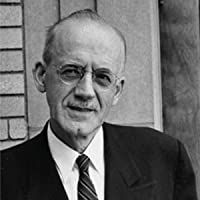
A. W. Tozer (1897-1963)
Within the time frame of the 1860s and the 1880s the spread of the Christian missionary endeavor was more and more a global endeavor and much organized beyond that of the individual workers in the field and much more in line with Jesus’ total vision as outlined in Luke 10:1-12 and much more organized both within the different church groups and in some instances co-operative one with the other in a common endeavor. By 1868, the London Missionary Society sent out Griffith John into China where he labored at Sichuau. In 1881, Samuel R. Clark of the China Inland Mission was the first to rent a home in Chengchu and was one of the responsible individuals in establishing Huafi Hospital.
In the same year the West China Union University, now Sichuan University was established and a Foundling Hospital founded. Today Christianity is part of the mainstream of China’s landscape due to the English and American missionary endeavor and has been able to weather the abuse by the Communist takeover under Mao Tse Tung. Islam is dominant only among non-Chinese ethnic groups on China’s outer margins. Christians make up the third largest grouping after Buddhism and those who practice folk religions. More important the Christian faith is strongest within the countryside and mostly away from Beijing and the seats of political power. This is due to the fact that the missionaries of the late 18th and the major part of the 19th majored on inland China. To relate the conditions of the 20th century or even the present is getting ahead of this narrative.
“True and absolute freedom is only found in the presence of God.” – A.W. Tozer
The earliest known contact is recorded on a plaque worked into a wall of rectangular platform built of close fitting stones, and given the Hawaiian title of Hikiau Heiau. On the front side was an obelisk built of the same lava rock but secured in a very non-Polynesian way. The obelisk stood twelve feet high and was mounted with a bronze commemorative plaque that read:

Kealakekua Bay in the morning.
Image: Wikimedia Commons
In this Heiau,
January 28, 1779,
Captain James Cook R.N.
read the English burial service over
William Watman, Seaman.
The first recorded
Christian Service
in the Hawaiian Islands.
Erected by the Kona Civic Club, 1928
Here was a far different record from the one the heiau actually told. This was a record of an accidental arrival of the Christian gospel. However, this record is more like a record of the coming of Englishmen in the South Pacific, more specifically that part to the east and southeast of Indonesia, New Guinea and Sumatra and southeast of the Philippines and including to that part of the Pacific referred to as the Coral Sea. Oceania includes the Solomon Islands, Tahiti, and a large number of small islands and an island group known as the Marquesas. The Pacific as a whole is a little over 12,000 miles (180 degrees ) across. North to south, from the Aleutian Islands off the coast of Alaska to the Antarctic , the ocean stretches nearly 10,000 miles. Magellan entered into Oceania in the 1500s but that was all he did as he sailed northward along the western coast of South America until he came out of Oceania by turning westward from coastal Peru and sailed westward until his ship entered into the area of the Philippine Islands.
Spanish, British, and Dutch ships entered the far western edge of Oceania where the Indian Ocean ends and the Pacific begins and skirted northeastward to the Malay peninsula and the coastal waters of southeast Asia, China, Indonesia, to Where the South China Sea meets the Pacific. This vast area so described by The European navigators became the last frontier of Christian mission. It started not by Christians from either North America or South America but by English, Portuguese, Dutch, and Americans already present in Calcutta, Thailand, the islands of Macao, Hong Kong, Singapore, the Spice Islands, and Sumatra. Western New Guinea, later known as Irian Jaya, lay within this part of the Pacific while the larger landmass of New Guinea lay within the sea lanes of Oceania which stretched toward New Zealand and Easter Island some ten thousand miles or more. The first Christian missionaries who entered western New Guinea came with the Dutch merchantmen who entered the waters of the Spice Islands.
About the same time that England, The Netherlands, Portuguese, the Spanish and French were plying the inner seas washing the shores of North America, South America, Africa, India, and Southeast Asia, turmoil was seething back in Europe, mainly France and especially central and eastern Europe. In 1685, King Louis XIV issued the Edict of Fontainebleau which ordered that Huguenot [French Reformed] Church buildings and schools be closed. The state-sanctioned suppression of all non-Catholics moved to a new stage.
PR
Further Reading:
For more on Comenius, the father of modern education, see: Global Pentecostal Renaissance? Reflections on Pentecostalism, Culture, and Higher Education, by Jeff Hittenberger
Bernie Van De Walle reviews: Michael G. Yount, A. B. Simpson: His Message and Impact on the Third Great Awakening (2016)




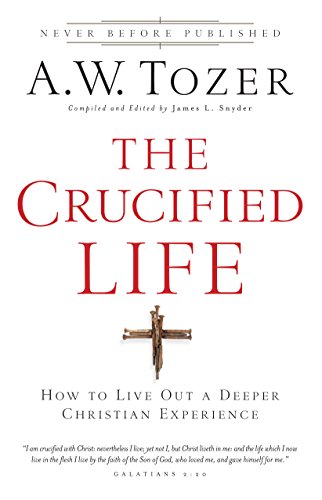
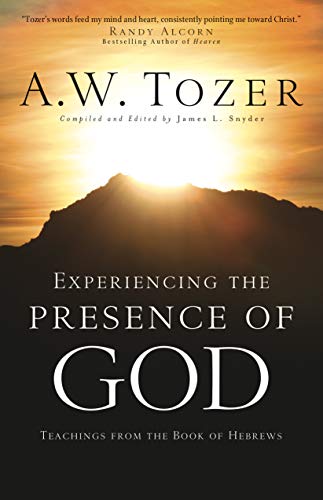
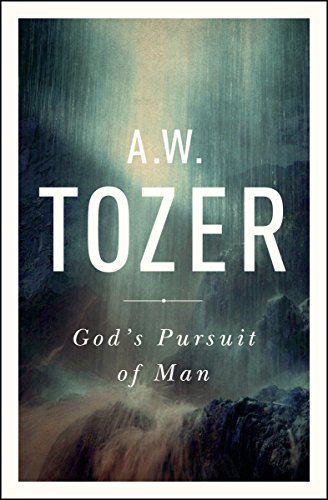







Leave a Reply